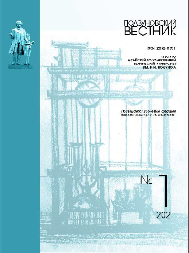OXIDATION- REDUCTION POTENTIAL AS AN INDICATOR OF THE STABILITY OF MEAT SYSTEMS
doi: 10.25712/ASTU.2072-8921.2021.01.009
Keywords:
oxidation-reduction potential, pH, sodium chloride, potassium chloride, calcium chloride, meat pigments, lipid oxidation, TBCH, curing compositions, meat saltingAbstract
Reduction-oxidation (redox) reactions, the development of which can be assessed by measuring the redox potential (ORP), are important for the formation of the quality of food products and their stability during storage. The ORP value of meat products depends on many factors, including the nature of the coupled redox pairs, temperature and the concentration of pro- and antioxidants. The aim of the research was to study the process of curing of meat with different pigment content with curing compositions with a low sodium content and their effect on the ORP of salted raw materials, the intensity of lipid and protein oxidation. The studies were carried out on chilled raw materials ‒ the longissimus dorsi of pork and chicken fillet, isolated from the haunch. Curing of raw meat was carried out with edible salt (K) and a curing mixture (A), consisting of 70 % sodium chloride plus 15 % potassium chloride plus 15 % calcium chloride. The results of the study indicate that the process of curing of meat raw materials both with sodium chloride and with compounds of low sodium content is accompanied by a decrease in the redox potential, which contributes to the stabilization of pigment oxidation processes. A decrease in the amount of sodium chloride in the composition of the curing mixture helps to inhibit oxidative changes in lipids of the studied raw materials.
Downloads
Published
How to Cite
Issue
Section
License
Copyright (c) 2021 Irina S. Patrakova, Galina V. Gurinovich, Olga M. Myshalova, Sergei A. Seregin , Marina V. Patshina

This work is licensed under a Creative Commons Attribution 4.0 International License.















 .
. This work is licensed under a
This work is licensed under a 
